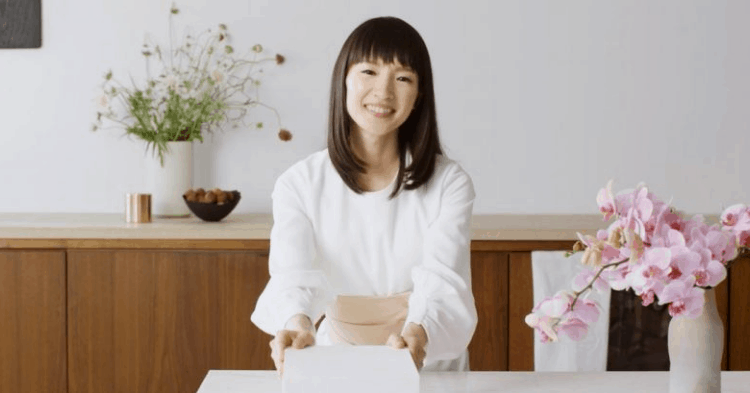Marie Kondo, Japanese organising consultant and author, first rose to fame around 2013 when her book The Life-Changing Magic of Tidying Up: The Japanese Art of Decluttering and Organizing became a bestseller. She has written 3 books and a journal by now.
Her books have sold over 30 million copies and have been translated into several languages.
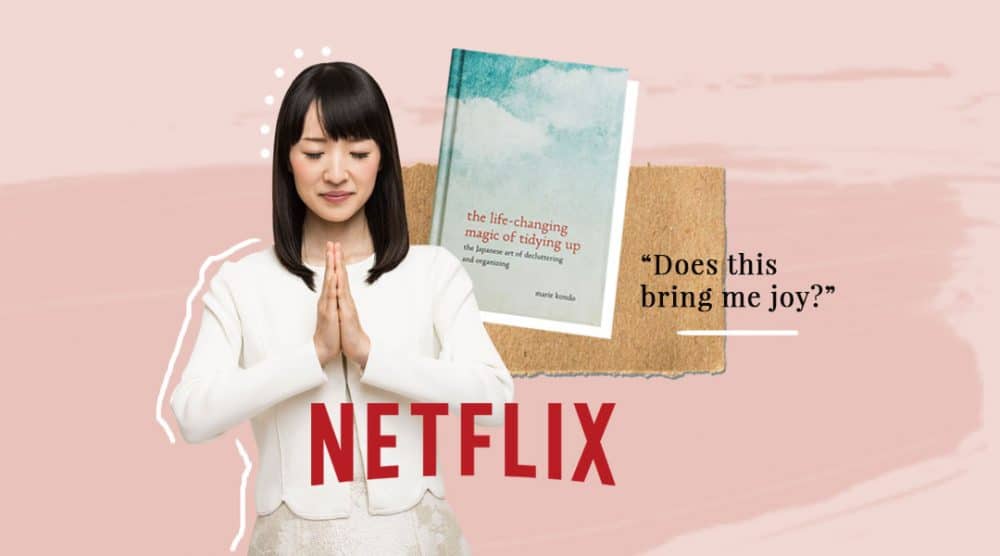
With 1.3 million followers on Instagram, hashtags related to her and her method have become influencers of their own, with #KonMari at 175 k posts and #KonMariMethod with 76.8 k posts as of the time of writing.
However, the reason why she is trending these days is that she bagged an 8-episode Netflix series, which was perfectly timed to release on January 1st – a time when the most of us are setting ourselves up for disappointment by jotting down unrealistic New Year resolutions.

If you’re like me, you would’ve seen a few of your friends broadcast their #KonMari experiences on Instagram story. It usually starts with a mountain of clothes on their bed, and culminates in an Instagram story sale of the preloved clothes that they have decided to part ways with. If you’re lucky, you might even catch them thanking their clothes before bidding goodbye.
While I understand that they’ve started their #KonMari journey with good intentions, I’m certain it won’t last.
Before I continue, let me establish a few things first.
I am not a hoarder and neither am I against “tidying up”. If anything, a lot of times my friends have referred to me as Monica (from F.R.I.E.N.D.S.) because I am rather particular when it comes to keeping my house clean.
However, I am not a “Konvert” nor am I a big fan of the KonMari Method. Here’s why:
The Premise Around Joy
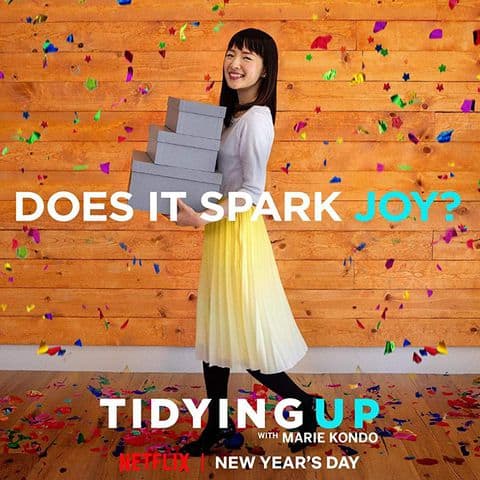
The KonMari method is built around the idea of joy – purchasing items that give us joy and getting rid of the ones that do not.
While I don’t feel comfortable associating the primary source of joy in my life to material items, there is also another issue with this mantra. What about the functional items that may not spark joy, such as our brooms and washing machine?
Trust me, if I ended up buying everything that gave me joy, my house would be a Harry Potter cave with wands, brooms and robes – barely anything useful or functional in it!
It’s clear that influencer Xia Xue feels the same, as she shared an Instagram story rant a few days ago.
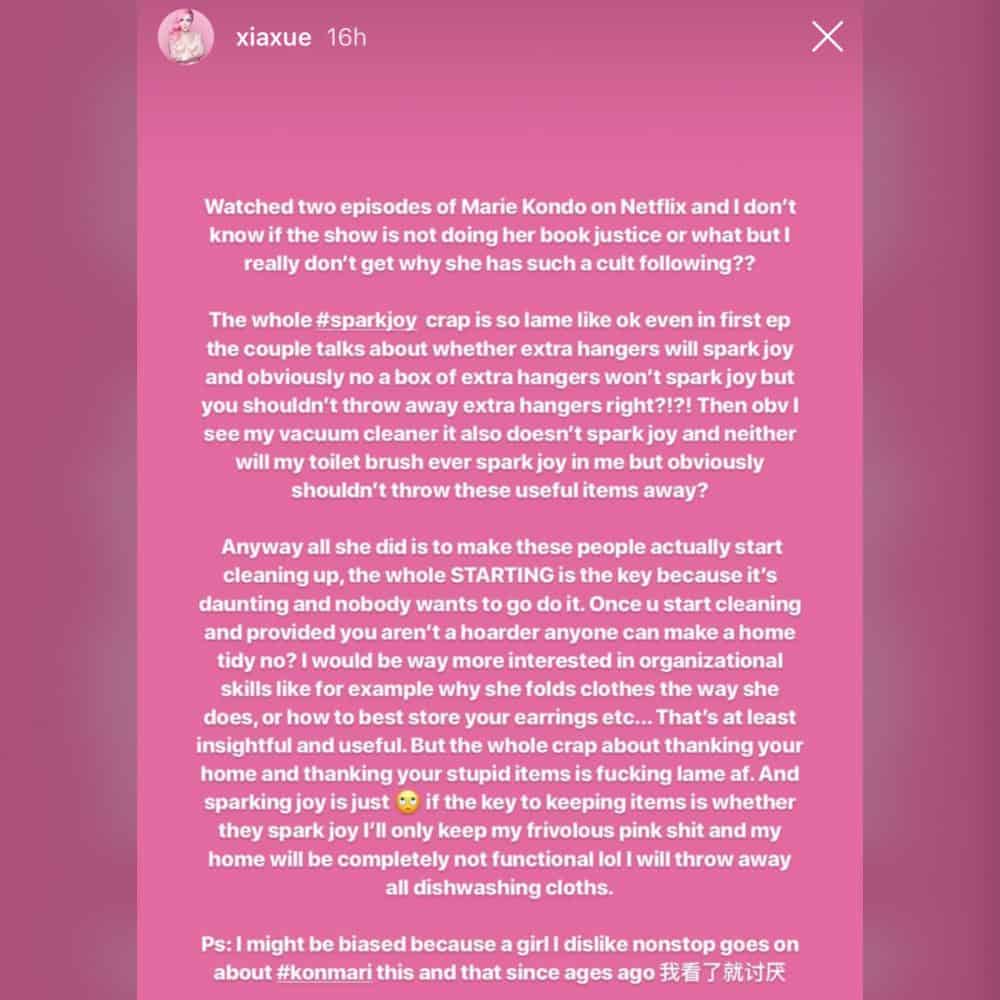
Sentiments Change Always
Another thing about Marie Kondo’s method that disturbs me slightly is her entire approach towards sentimental things. Kondo asks you to “thank your sentimental things and show them respect” before bidding them farewell.
In the second episode called “Empty Nesters”, Marie helps a retired couple reclaim their space by showing them how to purge old clothing, store Christmas decorations and display family photos. Few minutes down and I find the couple sitting with Marie on the floor with “peaceful music playing” in the background to thank the house for cooperating.
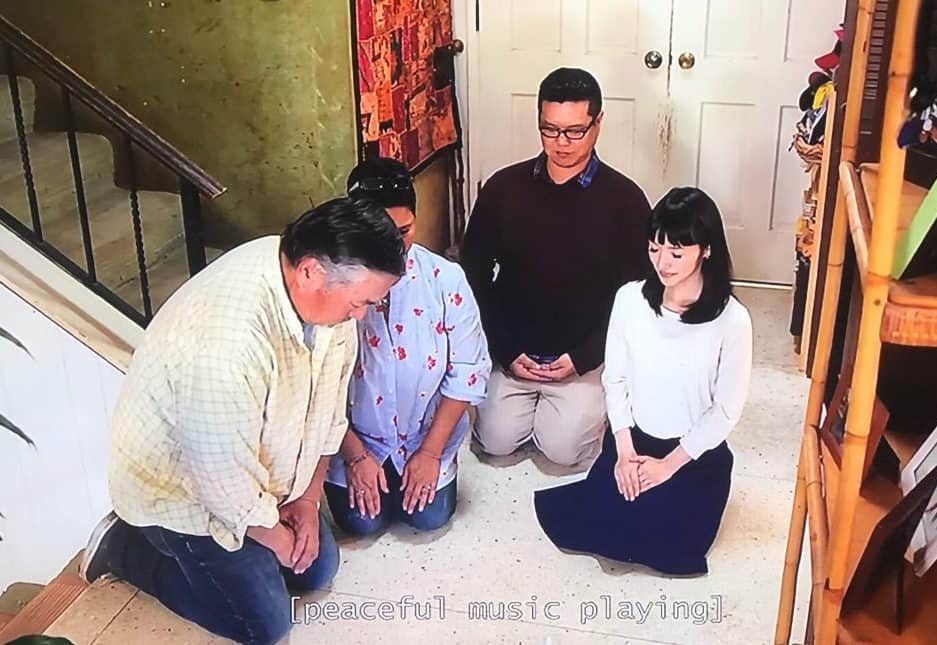
Besides thinking that it was weird, there are a few more things to consider. Firstly, sentiments are subjective and ever-changing. One thing that is close to my heart today, might mean nothing to me after five years. So, how do I decide?
Secondly, if you’ve lived in one place for more than a few years, had children, inherited anything, or are even the slightest bit sentimental, you are likely to have stuff. Frankly, I don’t know how to “thank a pair of gifted socks to protect my feet”!
The Impractical Suggestions
The KonMari method asks you to empty your purse daily.
It’s clear that the whole KonMari method is based around how millennials love minimalism because they have a busy life. I am what many consider a typical millennial – by every definition of it – I am a freelancer digital nomad who binge-watches shows and posts everything on social media.
Yet, if I am the target audience here, I am clearly not on board.
If I empty my purse daily, it also means that I’ll have to spend time rearranging it. That just sounds impractical to me, especially because I am usually rushing for places where I have to be (mostly cafes, client meetings and co-working spaces) and I cannot afford to arrange my bag from scratch every single morning before I walk out of my home.
While I’m sure the KonMari method has helped a number of people to become tidier, we’re all forgetting that it only works ideally for a very specific group of people. This would be working millennials that are living alone, who can spare time to tidy and go through the various practices encouraged by Kondo.
If we’re struggling to live paycheck to paycheck, or if we are living with others, how practical is it to throw away sentimental items or items that do not spark joy?







